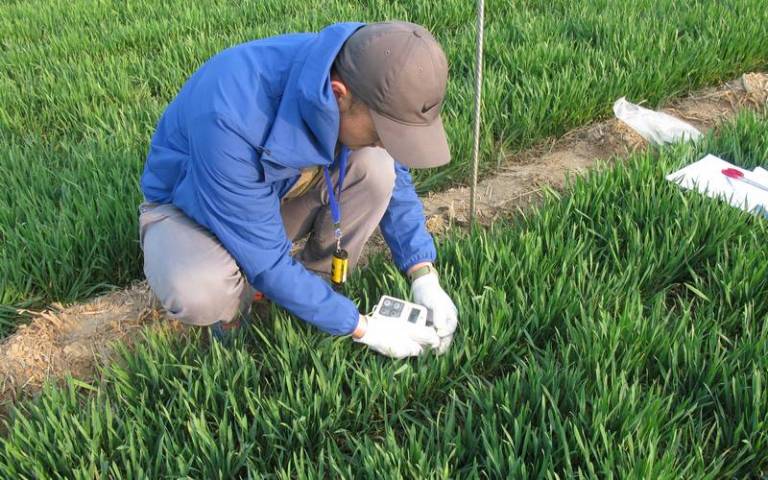Sentinels of Wheat: Providing an accurate picture of Chinese wheat production
An award-winning UK-China partnership is improving crop monitoring across the North China Plain to increase productivity and develop sustainable agriculture.

8 October 2020
Experts at UCL are working in partnership with colleagues at the Chinese Academy of Agricultural Sciences CAAS and China Agricultural University to improve the efficiency of wheat production across northern China.
China is the world’s largest single producer of wheat and, with a population of more than 1.2 billion, it is also one of the largest consumers. As the world’s – and China’s – population grows, more intensive agriculture methods are needed to ensure food security for all.
“Accurate digital monitoring of agricultural productivity is essential for both global food security and the livelihoods of low-income rural regions, but until now, monitoring methods haven’t met the challenge,” says Professor Philip Lewis (UCL Geography), the UK project lead for Sentinels of Wheat.
Previously researchers used either field surveys and mathematical models or satellite imagery to monitor crops, but neither provided measurements in real-time, and accuracy was hampered by weather conditions and changing satellite orbits.
Sentinels of Wheat is combining remote sensing and ground-sourced datasets using more advanced remote sensing technologies, new satellites and advanced data-assimilation techniques. This is enabling the team to provide more detailed and accurate information on crop growth and yields.
In 2019, the project, funded by the UK government’s Newton Fund, won the Newton Prize for the best research or innovation that promotes economic development and social welfare in its collaborating country.
As well as providing better crop yield predictions, the team, led in China by CAAS, is training a cadre of scientists to use the software. They are also applying state-of-the-art techniques in other countries, including Ghana and the UK.
Data from the project is feeding directly into agricultural production planning in China. The information also provides data on growth trends and yields that helps local authorities in decision-making on wheat harvesting, transportation and storage.
“We’re also providing more accurate analytics of crop development and how crops are responding to stresses, such as climate change, to inform more sustainable management practices,” Professor Lewis says.
 Close
Close


